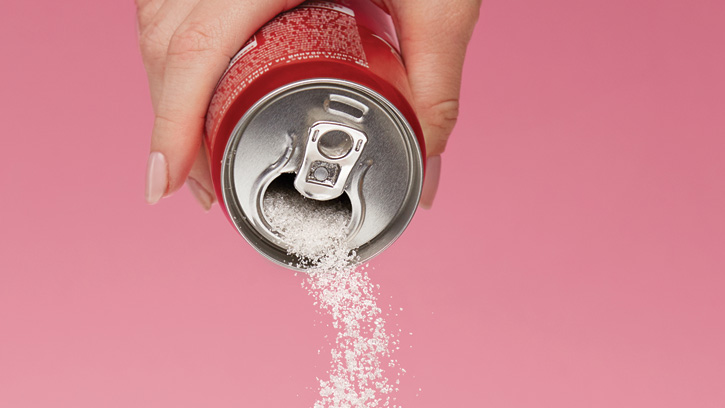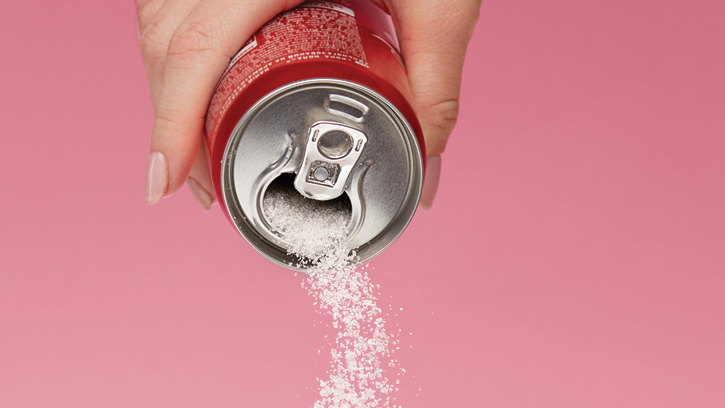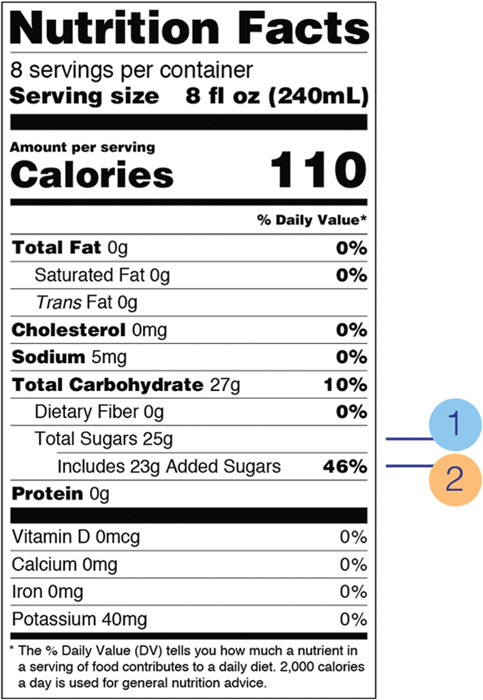Rare Sugars: Can Sustainable Taste So Sweet?
Ingredients | APPLIED SCIENCE
According to recent consumer survey data, about 80% of American consumers read ingredient labels to identify what sweeteners are added to products, and nearly half of all adult consumers report that they avoid artificial sweeteners due to health concerns. These are among the consumer behavior trends driving food and beverage companies to develop new natural, healthier, label-friendly sugar substitutes. Table sugar (sucrose) remains the gold standard sweetener and offers many other functional benefits, including texture modification, bulking, and fermentation substrate. Yet, excessive sucrose consumption has been associated with an increased risk of metabolic diseases such as cardiovascular disease, obesity, type 2 diabetes, and inflammation.
In response to this public health issue, the U.S. Food and Drug Administration (FDA) recently revised the Nutrition Facts label to require the listing of added sugars. High potency sweeteners like stevia, monk fruit, and sugar alcohols offer a means to reduce added sugar in products, yet they often impart undesirable aftertastes, sweetness lingering, or cooling effects. Additionally, they do not match the functional (e.g., bulking) properties of sucrose due to their higher sweetness potency, which means very little is needed to impart sucrose sweetness equivalency. Of the high potency sweeteners, those considered artificial or synthetic have negative consumer acceptance, even though consumers have a widely varying interpretation of natural label claims (Mora and Dando 2021).
Rare Sugars: How Sweet They Are
The sugar substitute market is poised for disruption by the introduction of rare sugars, naturally derived sweeteners with similar functional, sweetness, mouthfeel, browning, and bulking properties as sucrose but a fraction of the calories or metabolic impact. Rare sugars, as their name suggests, are naturally present in very small amounts in some foods such as figs, raisins, and wheat. Of the rare sugars, tagatose (with about 90% the sweetness but only 30% the extractable calories of sucrose) and allulose (with about 70% the sweetness but only 10% the calories) are of particular interest as they have been granted generally recognized as safe (GRAS) status by the FDA. Further, in recognition of the body of science supporting the difference in metabolic impact on the body arising from allulose versus that of sucrose, the FDA permits allulose to be excluded from total and added sugar label declarations (FDA 2019).
Since rare sugars are naturally present in small amounts in specific foods, extraction is neither economically nor environmentally sustainable. There is an urgent need to both increase understanding of consumer acceptance of these rare sugars and to develop new sustainable technologies for their production to address the expected increased demand for rare sugars.
But Will They Eat It?
Taste reigns in driving purchase intent, and a challenge in increasing the utilization of rare sugars in foods and beverages is a lack of sensory acceptance data. Unlike sugar alcohols and natural high potency sweeteners such as stevia and monk fruit on the market, rare sugars tend not to impart pronounced undesirable aftertastes, sweetness lingering, or cooling effects. Being naturally derived with the potential for sustainable production from agricultural waste streams, rare sugars also offer a cleaner and greener label alternative to other sweetener alternatives. A recent sensory study on sweetened Greek yogurt showed that allulose scored highest in flavor liking and purchase intent compared to sucrose, sucralose, and stevia (Mora et al 2022).
From Agriculture Waste to Sweet Taste
Additional challenges in increasing rare sugar use are their current high cost, due in part to limited feedstock and production options. Almost two decades ago, Professor Ken Izumori at Japan’s Kagawa University found a way to convert fructose to allulose using the enzyme 3-psicose-3-epimerase. Since then, commercial production of allulose has used corn as a raw material and an enzymatic process reminiscent of that used in high fructose corn syrup production. However, unlike the low cost of high fructose corn syrup, the cost of production of rare sugars remains high due to the reliance on a relatively niche enzyme. With consumers increasingly avoiding corn-derived ingredients, designing biocatalytic pathways that pivot from corn to an agricultural waste stream feedstock and improving the stability and reuse of key enzymes would help overcome limitations in the current state-of-the-art in production of rare sugars.
Leveraging enzymes as catalysts for ingredient production can improve specificity compared to chemical catalysis and reduce byproduct formation. However, a practical hurdle remains in their relative instability in the non-ideal and often variable conditions typical of waste streams (e.g., variable and extreme pH values and temperature). As such, additional research is needed for the design of new, innovative technologies in enzyme stabilization to improve their performance and cost-effectiveness, and in enzyme immobilization to permit their facile recovery and reuse (Wang et al 2021). Development of a cost-effective, versatile biocatalytic pathway for rare sugar production would enable valorization of the wide range of carbohydrate-rich waste streams to meet the increasing consumer demand for rare sugars in a range of products. Such carbohydrate-rich waste streams could include hemicellulose/cellulose/lignin-rich okara from soy; lactose-rich whey permeate from dairy; and hemicellulose-rich bagasse from sugar processing.
Sweetness Revisited
The average North American consumes more than three times the maximum recommended amount of sucrose daily. It is not breaking news that overconsumption of sucrose contributes to an array of health problems and the appeal of noncaloric substitutes has been increasing over the years. The convergence of the revised Nutrition Facts label highlighting “added sugar” content and a recent U.S. Department of Agriculture report that found approximately 70% of school lunches and more than 90% of school breakfasts served exceed the Dietary Guidelines for added sugar consumption paves the way for massive market growth for natural, good tasting, no-added-sugar sweeteners like rare sugars (USDA 2022).
In parallel, there is a persistent need to develop new technologies to help reduce and valorize waste streams from food and agricultural processes. Chemical catalytic processes to produce value-added ingredients from waste streams often lead to the formation of undesirable byproducts, colors, and off-flavors. Design of greener technologies in which enzymes offer higher specificity and reduced byproduct formation versus chemical counterparts could permit production of rare sugars from a range of carbohydrate feedstocks. Indeed, valorization of carbohydrate-rich waste streams (e.g., sugarcane bagasse, whey permeate, soy okara) into high-value-added rare sugars represents a unique opportunity to both reduce food waste and enhance the sustainability of food processing while addressing a major industry and public nutrition challenge.
Although allulose has yet to be approved in the European Union and Canada, where it is regarded as a novel food ingredient and pre-market assessment is required prior to approval for sale, it has seen remarkable market growth in both Asia and the United States. With additional research identifying consumer demand and ideating new, sustainable biocatalytic approaches to lower its production cost, rare sugars are well positioned to become the next big sweetener alternative in reduced sugar, naturally sweetened products.
A HEALTH SWEETSPOT?
In a recent Nutrition Reviews review paper, researchers from the University of Toronto and Agriculture and Agri-Food Canada looked at the scientific evidence of the health effects of well-known rare sugars in humans. They found that rare sugars present new opportunities for commercialization as alternative sweeteners, especially for people who are at high cardiometabolic risk. Here’s a few highlights of the findings:
Allulose
- A monosaccharide found in small amounts in maple syrup, dried fruit, and brown sugar.
- A C-3 epimer of fructose with about two-thirds of the sweetness of sucrose but minimal caloric content.
- Is not metabolized in the body.
- Acute and longer-term randomized controlled trials have examined the effect of allulose consumption on plasma glucose and insulin release, and weight loss, showing benefit in both healthy populations and in individuals with type 2 diabetes.
D-tagatose
- This monosaccharide is a C-4 epimer of D-fructose that is found primarily in whey milk protein and is 92% as sweet as sucrose.
- Has been used as a low-calorie sweetener alternative in milk and yogurt, but there is a debate about its exact calorie content.
- Multiple longer-term studies examining the effects of D-tagatose on body weight and blood glucose show a mild benefit.
Isomaltulose
- Also known as palatinose, it is a disaccharide of glucose and fructose linked together by an α1-6 glycosidic bond.
- Naturally found in small amounts in honey and cane sugar, isomaltulose has half the sweetness but the same caloric content of sucrose.
- Shown to improve the glycemic response in human studies, thus showing promise as an alternative sweetener.
L-arabinose
- A monosaccharide and aldopentose found naturally in certain plant cell walls, including many grains and plant gums.
- Has half the sweetness of sucrose with no caloric value and has been shown in animals to be less metabolizable compared with glucose.
- Most acute post-prandial studies demonstrate a benefit on glycemic control in healthy individuals.
Trehalose
- A disaccharide of 2 glucose molecules with an α1,1-glycosidic linkage, is found in yeast, honey, shrimp, insects, and some plants.
- Half as sweet as sucrose but has the same caloric content.
- Shown to reduce blood glucose levels.
Source: Ahmed et al. (2021). Nutrition Reviews.
REFERENCES
Ahmed, A., T.A. Khan, D.D. Ramdath, et al. 2022. “Rare sugars and their health effects in humans: a systematic review and narrative synthesis of the evidence from human trials.” Nutr. Rev. 80(2): 255–270. doi.org/10.1093/nutrit/nuab012.
FDA. 2019. FDA “In Brief: FDA allows the low-calorie sweetener allulose to be excluded from total and added sugars counts on Nutrition and Supplement Facts labels when used as an ingredient.” https://www.fda.gov/news-events/fda-brief/fda-brief-fda-allows-low-calorie-sweetener-allulose-be-excluded-total-and-added-sugars-counts#:~:text=as%20an%20ingredient-
Mora, M.R. and R. Dando. 2021. “The sensory properties and metabolic impact of natural and synthetic sweeteners.” Comp. Rev. Food Sci. Food Saf. 20: 1554–1583.
Mora, M.R., Z. Wang, J. Goddard, et al. 2022. “Consumers Respond Positively to the Sensory, Health, and Sustainability Benefits of the Rare Sugar Allulose in Yogurt Formulations.” Foods. https://www.mdpi.com/2304-8158/11/22/3718.
U.S. Dept. of Agriculture. 2022. “Food & Nutrition Service, report to Congress: Added Sugars in School Meals & Competitive Foods.” https://fns-prod.azureedge.us/sites/default/files/resource-files/AddedSugarsinSchoolMeals.pdf
Wang, Z., J. Qi, T.C. Hinkley, et al. 2021. “Recombinant lactase with a cellulose binding domain permits facile immobilization onto cellulose with retained activity.” Food Bioprod. Process. 126: 207–214.
Learning Objectives
- Review consumer, technical, and regulatory considerations around rare sugar sweeteners.
- Understand driving forces and limitations in rare sugar use.
- Preview new processing methods to produce rare sugars from carbohydrate-rich waste.






